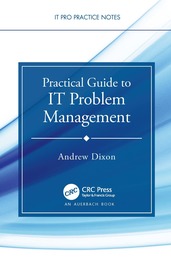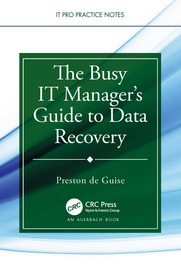
Practical Guide to IT Problem Management
Sorozatcím: IT Pro Practice Notes;
-
20% KEDVEZMÉNY?
- A kedvezmény csak az 'Értesítés a kedvenc témákról' hírlevelünk címzettjeinek rendeléseire érvényes.
- Kiadói listaár GBP 15.99
-
7 639 Ft (7 275 Ft + 5% áfa)
Az ár azért becsült, mert a rendelés pillanatában nem lehet pontosan tudni, hogy a beérkezéskor milyen lesz a forint árfolyama az adott termék eredeti devizájához képest. Ha a forint romlana, kissé többet, ha javulna, kissé kevesebbet kell majd fizetnie.
- Kedvezmény(ek) 20% (cc. 1 528 Ft off)
- Kedvezményes ár 6 111 Ft (5 820 Ft + 5% áfa)
Iratkozzon fel most és részesüljön kedvezőbb árainkból!
Feliratkozom
7 639 Ft

Beszerezhetőség
Becsült beszerzési idő: A Prosperónál jelenleg nincsen raktáron, de a kiadónál igen. Beszerzés kb. 3-5 hét..
A Prosperónál jelenleg nincsen raktáron.
Why don't you give exact delivery time?
A beszerzés időigényét az eddigi tapasztalatokra alapozva adjuk meg. Azért becsült, mert a terméket külföldről hozzuk be, így a kiadó kiszolgálásának pillanatnyi gyorsaságától is függ. A megadottnál gyorsabb és lassabb szállítás is elképzelhető, de mindent megteszünk, hogy Ön a lehető leghamarabb jusson hozzá a termékhez.
A termék adatai:
- Kiadás sorszáma 1
- Kiadó Auerbach Publications
- Megjelenés dátuma 2022. május 12.
- ISBN 9780367636227
- Kötéstípus Puhakötés
- Terjedelem98 oldal
- Méret 198x129 mm
- Súly 120 g
- Nyelv angol 361
Kategóriák
Rövid leírás:
Whilst IT problem management is well understood, doing it in practice is much harder. Aligned with such well known frameworks as ITIL, this book offers practical advice on how to tackle problems in complex environments. Each chapter explores a different aspect of problem solving and is illustrated with real-life case studies.
TöbbHosszú leírás:
Some IT organisations seem to expend all their energy firefighting – dealing with incidents as they arise and fixing, or patching over, the breakage. In organisations like this, restarting computers is seen as a standard method to resolve many issues. Perhaps the best way to identify whether an organisation understands problem management is to ask what they do after they have restarted the computer. If restarting the computer fixes the issue, it is very tempting to say that the incident is over and the job is done. Problem management recognises that things do not improve if such an approach is taken. Such organisations are essentially spending their time running to stay in the same place.
Written to help IT organisations move forward, Practical Guide to IT Problem Management presents a combination of methodologies including understanding timelines and failure modes, drill down, 5 whys and divide and conquer. The book also presents an exploration of complexity theory and how automation can assist in the desire to shift left both the complexity of the problem and who can resolve it. The book emphasises that establishing the root cause of a problem is not the end of the process as the resolution options need to be evaluated and then prioritised alongside other improvements. It also explores the role of problem boards and checklists as well as the relationship between problem management and Lean thinking. This practical guide provides both a framework for tackling problems and a toolbox from which to select the right methodology once the type of problem being faced has been identified. In addition to reactive methods, it presents proactive activities designed to reduce the incidence of problems or to reduce their impact and complexity should they arise.
Solving problems is often a combination of common sense and methodologies which may either be learnt the hard way or may be taught. This practical guide shows how to use problem solving tools and to understand how and when to apply them while upskilling IT staff and improving IT problem solving processes.
TöbbTartalomjegyzék:
Biography. Introduction. Chapter 1 Getting Your Priorities Right. Chapter 2 Timelines. Chapter 3 Failure Modes. Chapter 4 Complexity Theory. Chapter 5 Automation and Artificial Intelligence. Chapter 6 Drill Down. Chapter 7 Divide and Conquer. Chapter 8 Cause and Effect. Chapter 9 Resolution Evaluation Methods. Chapter 10 ITIL Problem Management. Chapter 11 Problem Boards and Problem Records. Chapter 12 The Drive for Efficiency. Chapter 13 Applying the Principles to the World Outside of IT. Chapter 14 Using Checklists. Conclusion. A Glossary. B Sample Checklists. Index.
Több




